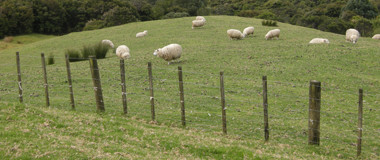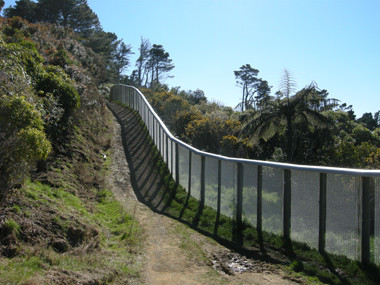 Keeping stock and wild animals such as deer and goats out of indigenous plant communities (including forests, coastal dunes or wetlands) may be the highest plant conservation priority. In many cases the only realistic option for control of stock is with a fence although not all areas require a fence or are able to be fenced.
Keeping stock and wild animals such as deer and goats out of indigenous plant communities (including forests, coastal dunes or wetlands) may be the highest plant conservation priority. In many cases the only realistic option for control of stock is with a fence although not all areas require a fence or are able to be fenced.
Stock and wild animals will affect natural areas by:
- Compacting and eroding soil
- Browsing and trampling seedlings, reducing or even preventing natural regeneration
- Damaging tree bark and roots
- Changing the forest environment by opening up the understorey and creating gaps
- Introducing weeds by depositing seeds through their hooves and dung
- Increasing soil fertility, which favours introduced weeds rather than native plant growth.
 Predator proof fence surrounding Karori Sanctuary, Wellington.Photographer: John Sawyer.Some areas may have been grazed to reduce fire risk or weed growth. However, in the long term, grazing can increase the risk of fire by creating a more open, dry understorey with more broken and dead branches. Grazing can also increase weed growth by introducing seeds and creating more gaps where weeds can take hold.
Predator proof fence surrounding Karori Sanctuary, Wellington.Photographer: John Sawyer.Some areas may have been grazed to reduce fire risk or weed growth. However, in the long term, grazing can increase the risk of fire by creating a more open, dry understorey with more broken and dead branches. Grazing can also increase weed growth by introducing seeds and creating more gaps where weeds can take hold.
For more information see*:
- Pest fences notes and comments by Mike Aviss and Andy Roberts (DOC)
- Covenant fencing - Queen Elizabeth Trust
*The Network is not responsible for the content of external internet sites
